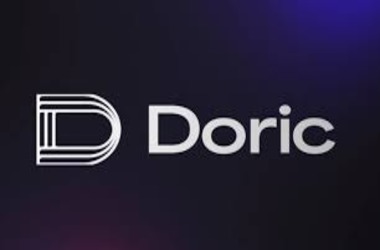
Doric’s Vision and Mission
Doric is more than just a blockchain; it is a meticulously designed network aimed at addressing the ever-evolving needs of the economic system and the digital landscape. At its core, Doric seeks to democratize the blockchain industry by providing a secure, efficient, and accessible platform for asset tokenization.
The Core Features of Doric
Doric’s primary objective is to offer a comprehensive and user-friendly solution for individuals and businesses to securely conduct digital transactions. Beyond being a transaction platform, Doric aims to revolutionize asset tokenization, allowing users to fractionate large assets into tradable units, thereby fostering liquidity and business growth.
Doric’s Operational Mechanisms
Doric (DRC) functions both as a token and a crucial component of the Doric blockchain, serving as a settlement mechanism for decentralized applications (DApps) within the Doric ecosystem, ensuring efficient transactions. The dedicated blockchain, integrated with the Ethereum Virtual Machine (EVM) and using the Proof of Authority (PoA) consensus mechanism, is designed for speed, security, and scalability. Doric Network goes beyond transactions with initiatives like the Ambassador Program, where participants actively contribute legal solutions in operational countries, shaping the platform’s future through community engagement.
Understanding Tokenization
Tokenization, a fundamental concept in the Doric ecosystem, involves converting physical assets, such as real estate or company stocks, into digital tokens on a blockchain. This revolutionary process democratizes access to traditional financial markets, offering a transparent and secure way to trade assets.
The Dual Purpose of Tokenization
Tokenization serves a dual purpose in the financial world. Firstly, it unlocks the inherent value of traditional assets by making them divisible and tradable in the digital realm, increasing liquidity and expanding investment opportunities globally. Secondly, it simplifies and enhances the efficiency of financial processes through smart contracts, automating tasks such as dividend distribution and asset transfers, reducing costs and administrative complexities associated with traditional transactions.
Illustrating Tokenization’s Impact
Consider a scenario where a high-value real estate property is tokenized. Traditionally owned by a few high-net-worth individuals, the Doric platform allows the property to be tokenized into smaller, tradable units. Investors, regardless of financial capacity, can purchase these tokens, gaining fractional ownership of the property. This example illustrates how tokenization democratizes access to valuable assets, allowing a broader and more diverse range of people to participate in real estate investments.
Doric’s Role in Financial Innovation
Doric not only presents itself as a tokenization platform but as a catalyst for financial innovation. By democratizing access to tokenization, the company redefines participation in the digital economy, enabling every individual, from novice investors to experts, to play a significant role in the world of digital assets. Their straightforward, transparency-focused approach demonstrates that innovation doesn’t have to be exclusive territory. Doric, with its clear vision and simple system, leads the way towards a financial future where blockchain technology is not only revolutionary but also truly accessible to everyone. Tokenization becomes a powerful tool not only for financial experts but for anyone wishing to participate in the evolution of the digital economy in a simple and secure manner.